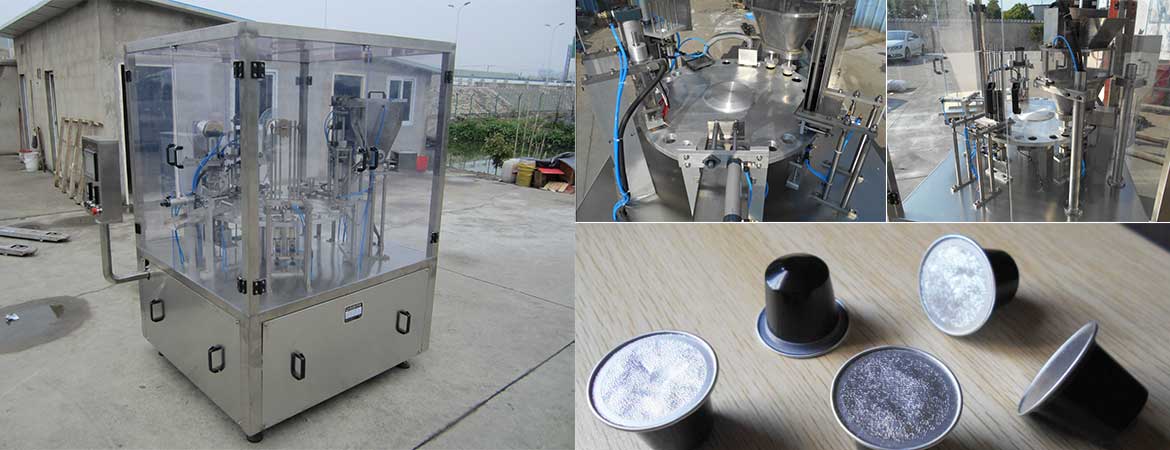Which is the Leading Cup Filling and Sealing Machine Manufacturer
All leading machinery and equipment manufacturers worldwide have their bases in China. The country has promoted itself as one of the most prominent destinations of high-quality and low-priced products supplied to clients globally. In this context, the leading company in China has also become one of the best suppliers of such machines. Hence, you don’t need to look elsewhere on the net; you can click and browse here at https://www.joygoalmachine.com/, where you can quickly get complete details of a range of Cup filliCupand sealing machines in China.
JOYGOAL is perhaps the only manufacturer with the broadest range of semi-automatic and automatic machines and sells the same at global cup filling and coupling machine factory prices. The company manufactures cup filling and Cupling machines, jar sealing machines, rotary machines, automatic I-stick sealing machines, and automatic viscous filling machines. The products include jelly cup filling, automatic cup feeder accessories, yoghurt filling, sealing machines, etc.
Functions of Cup Filling and Sealing Machine
The Automatic filling sealing machine is suitable for error-free filling and sealing fruit juices, fresh cream, mineral water, soy milk, pudding, condiments, etc. The food packing machine is made of stainless steel and conforms to world-class hygienic standards. The whole process of filling and sealing is done automatically, and its functioning includes cup discharge, liquid injection, film release, date coding, first heat sealing, and photoelectric proofreading. Soon after, the stages are completed rapidly and without any error.
You can also order an automatic packing machine as you may need it soon after the earlier stated functions. The process is done with the help of hands and is not suitable for mass production. The simplest way is to place the funnel into the plastic nozzle of the pouch and then steady the bag with one hand. You then pour the liquid into the funnel and wait patiently for the contents to trickle down into the pouch. Lastly, screw the cap tightly.
However, if you order from JOYGOAL, the leading filling and sealing machine manufacturer, you get all the above processes completely automated. In the case of medical pouch sealing, you require extra sterilization during the whole process. In the case of the automatic filling machine, the entire function starts from pouches feeding, positioned filling, cleaning the nozzles, caps screwing, end-products discharging, and the liquid level control is carried out in the absence of a manual hand.
Therefore, JOYGOAL has become a top-rated Cup filling and Coupling manufacturer globally.
Types of Filling and Sealing Machines
Filling and sealing machines are crucial in various industries, from food and beverage to pharmaceuticals and cosmetics. These machines automatically fill containers with products and seal them securely, ensuring efficiency, accuracy, and integrity. There are several types of filling and sealing machines, each designed to meet specific industry needs and production requirements. In this comprehensive guide, we’ll explore various types of filling and sealing machines and their working principles, applications, and benefits.
Volumetric Filling Machines:
Volumetric filling machines are among the most common types used across industries. They operate based on predetermined volumes of product dispensed into containers. These machines can be further categorized into piston, rotary, and peristaltic fillers.
Piston Fillers: Piston fillers use a piston mechanism to draw products from a supply source and dispense them into containers. The piston moves back and forth, creating a vacuum to fill the cylinder with product and then pushing it into the container. These machines are ideal for filling thick or viscous liquids such as sauces, creams, and pastes.
Rotary Fillers: Rotary fillers utilize rotating mechanisms to fill containers. They typically consist of multiple filling heads mounted on a rotating carousel. As containers move along the conveyor, the filling heads dispense the product into them. Rotary fillers are suitable for high-speed production lines and can handle various products, including liquids, powders, and granules.
Peristaltic Fillers: Peristaltic fillers employ rotating rollers or gears to squeeze flexible tubing containing the product, forcing it into the containers. These machines are commonly used to fill small volumes of liquid products with high accuracy, such as pharmaceuticals and cosmetics. Peristaltic fillers offer gentle product handling and are suitable for filling sensitive or delicate products.
Net Weigh Filling Machines:
Net-weigh filling machines measure the weight of the product as it is dispensed into containers. They ensure precise filling by adjusting the dispensed amount based on the product’s weight. Net-weigh fillers are commonly used for filling products sold by weight, such as grains, nuts, and powders. These machines are equipped with load cells or scales to accurately measure the product’s weight and control the filling process accordingly.
Auger Filling Machines:
Auger filling machines are designed to fill containers with powdered or granular products using an auger screw mechanism. The auger rotates inside a hopper, scooping the product and dispensing it into the containers. Auger fillers are versatile and can handle various products, including spices, flour, and pharmaceutical powders. They offer precise filling control and are suitable for free and non-free products.
Tube Filling and Sealing Machines:
Tube filling and sealing machines are designed to fill and seal tubes with semi-solid or viscous products such as creams, gels, and ointments. These machines can handle various tube materials, including plastic, laminate, and aluminium. Tube fillers employ different mechanisms, such as hot air sealing, ultrasonic sealing, or crimping, to seal the filled tubes securely. They are widely used in the cosmetics, pharmaceutical, and personal care industries to package products in tubes.
Cup Filling and Sealing Machines:
Cup filling and sealing machines fill pre-formed cups with liquid, semi-liquid, or powdered products. These machines are commonly used for packaging single-sesingle-servingproducts such as yoghurt, pudding, and sauces. Cup fillers can employ different sealing methods, including heat sealing, film sealing, and snap-on lids, depending on the product requirements. They offer fast and efficient packaging solutions for single-portion products.
Tray Sealing Machines:
Tray sealing machines seal pre-formed trays or containers with a film or lid. These machines are commonly used in the food industry for packaging products such as ready-to-eat meals, fresh produce, and deli items. Tray sealers can employ various sealing methods, including heat sealing, vacuum sealing, and modified atmosphere packaging (MAP). They ensure product freshness, integrity, and tamper-evident packaging.
Ampoule Filling and Sealing Machines:
Ampoule filling and sealing machines are specialized equipment used in the pharmaceutical industry to fill and seal ampoules with liquid medications. These machines can handle small volumes of liquid with high precision and accuracy. Ampoule fillers typically employ filling needles and gas flushing to fill and seal the ampoules under sterile conditions. They ensure product safety, purity, and compliance with pharmaceutical regulations.
In conclusion, filling and sealing machines play a vital role in various industries by automating the packaging process and ensuring product quality, consistency, and efficiency. The choice of filling and sealing machine depends on factors such as product type, packaging requirements, production volume, and industry regulations. By understanding the different filling and sealing machines available, manufacturers can select the most suitable equipment to meet their specific needs and optimize their production processes.

















